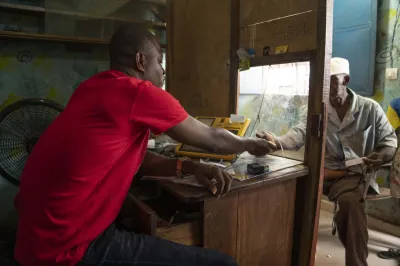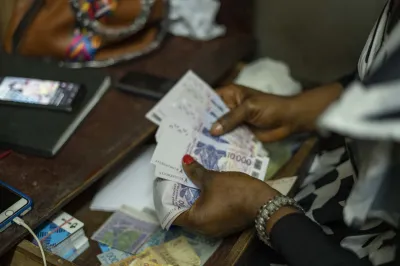How to Run With Mobile Money and Not Fall
In this post, Dalberg colleague, Matt Shakhovskoy, identifies some internal challenges at MNOs that prevent them from delivering success with mobile money.
Mobile financial services delivered by MNOs require a contribution from all parts of the business. As a result, integrating delivery of a mobile financial service into an MNO’s existing operations is not easy. These internal dynamics often add costs to delivery, turning potential advantages into disadvantages. In our work with MNOs, my colleagues and I at Dalberg have identified some common issues on how to internally structure a mobile money business for success.
Create an empowered team with strong connections across the MNO
Put together an independent team with clear management talent – check. Align the full organization around cooperatively supporting and delivering mobile financial services – wait, align the full organization? In our experience, MNOs have learned to set up an independent team on mobile money (not buried in their value-added services and/or strategic initiatives) but then underestimate the coordination needed across the organization to achieve the full potential of mobile financial services. An optimal mobile money unit both leads the initiative and also plays the role of a coordinator, bringing together the various parts of the MNO business to deliver the service. To be successful at this type of collaboration, this unit needs support from the top, a respected senior manager, and the dedicated time and support from within the IT, Distribution, Marketing, Finance and Customer Care Departments.
Share back office functions by collaborating and adjusting priorities
Providing the new mobile money team with standard IT, legal, HR, marketing and finance support is not difficult. In one major African MNO we worked with, the mobile money manager remarked that “the standard business unit support is not an issue.” However, in our experience, unlocking the full potential of mobile financial services requires going beyond the standard support. For instance:
- Create Service Level Agreements (SLAs) for customer responsiveness: Mobile money teams should proactively set new call priority procedures and service level agreements with customer service teams. In fact, we have not seen service capability as the major issue, but rather low capacity. Small service teams are often understaffed to deal with customer queries and second order issues requiring follow up.
- Increase cross-department information sharing: Many MNOs’ finance, marketing, and sales departments closely guard their customer data within the organization – either citing competing priorities or wanting to maintain control of how the data is used. As many mobile money services use external vendor solutions, there is some triangulation of data required across the finance and operational sides of the MNO business to get the sort of business intelligence needed to drive and adapt a successful mobile financial services strategy. For the mobile money team and the marketing department to have the sort of information required to effectively target customer segments, expert analysts need to be allowed to consolidate and analyze data across organizational boundaries. In one major MNO, the lack of analytical capacity to run the numbers and a strong reticence to share data led to virtually no real market or customer intelligence to support marketing and targeted expansion.
Structure distribution to capture the most long-term value
There is a lot of debate over the use of existing airtime resellers as mobile money agents. Some believe that MNOs should use existing airtime resellers and integrate management of airtime resellers within the management of mobile money. Others believe MNOs should manage airtime and mobile money through separate agent networks. There is evidence that in some markets the airtime reseller network may not be well suited for mobile money at the start.
In most markets, the airtime distribution network of an MNO should provide one of the most powerful assets for a new mobile money service. However, on-phone purchases of airtime can over time eliminate the need for airtime dealers. The MNO and mobile money consumers benefit, as do the few dealers that convert to mobile money agents. The super-dealers and large numbers of street airtime sellers lose out, and these two groups have a powerful influence over the MNOs’ current success, creating a negative incentive to adapt.
Given the super-dealers’ understandable opposition, few MNOs have been able to quickly convert a subset of top airtime dealers into mobile money agents. Mobile money units typically resort to the slower, higher cost process of establishing their own parallel distribution networks. To manage the recruitment, training and management of this parallel distribution network the mobile money unit needs its own distribution manager and staff – effectively siloing and replicating the expertise managing the airtime vendor network. At best, what tends to emerge is a weak collaboration between a mobile money team and the distribution department. At worst, misaligned incentives and political interests create internal rivalries that create extra work and destroys shared value. In one MNO context, these perverse incentives led to an intense internal rivalry between distribution managers with subtle actions constraining the development of new distribution networks.
There is no quick fix available. To capture the full profit potential of mobile money, MNOs need to take difficult decisions on long-term distribution synergies and then manage relationships today to achieve these aims. If this agenda is driven by the CEO and CFO the dialogue can begin to transcend the interests of individual business units and a broader view of value creation can be developed. An alliance can be then created between the mobile money unit and the distribution business unit with defined collaboration to build-out a mobile money agent network. Once this network has hit critical mass, the MNO should be in a stronger position to begin challenging some of the prevailing internal ways of working and external relationships with super-dealers to truly create leverage across the business.




Comments
Mobile banking really gives a
Mobile banking really gives a new level of reach to microfinance organizations. As an intern with opportunity international this summer, I have learned more about mobile banking and its benefits. Learn more about Opportunity’s view on mobile banking at opportunity.org.
Add new comment